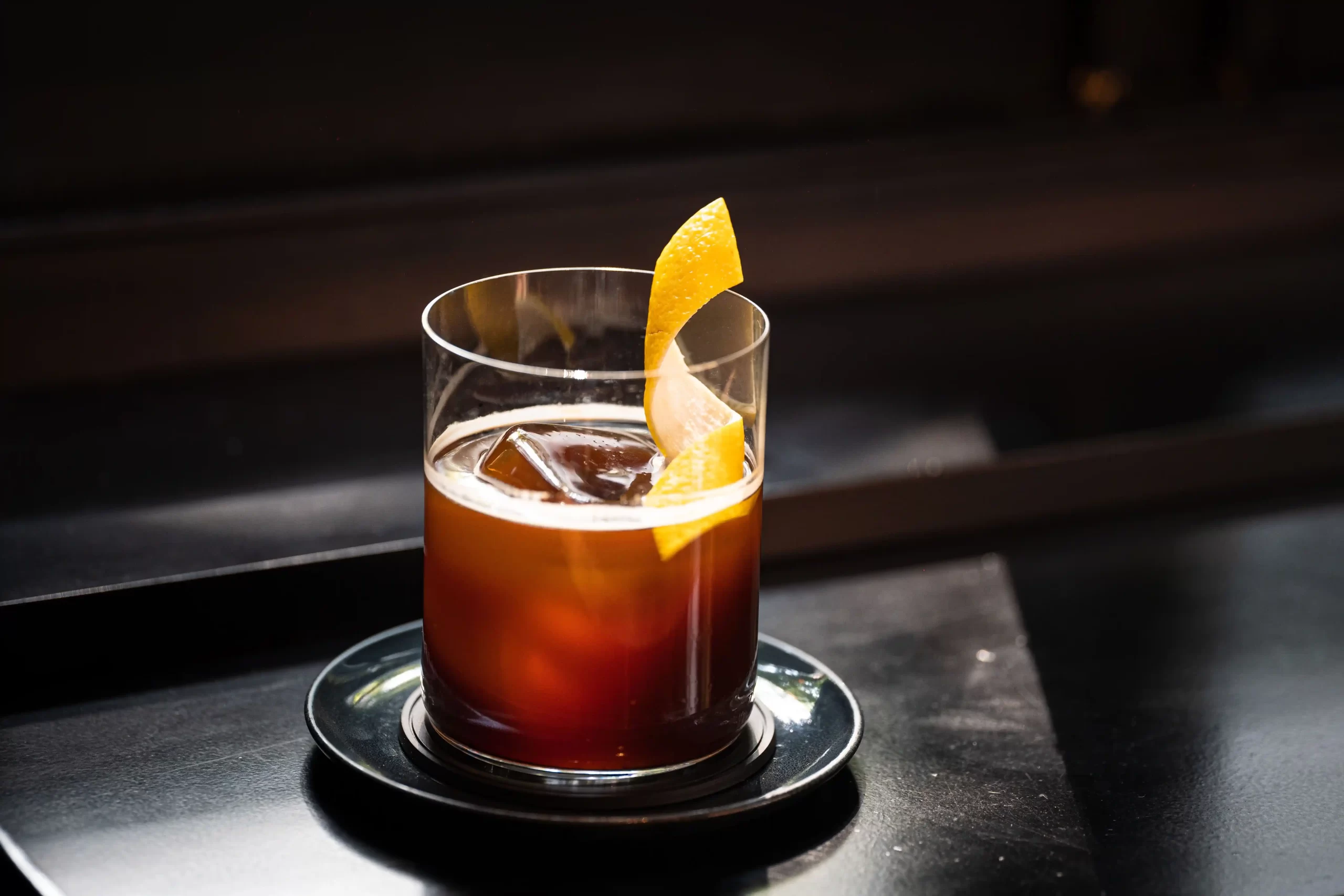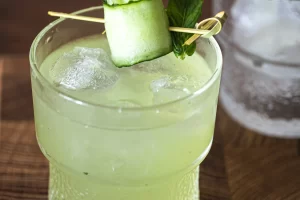The Boulevardier cocktail rose from the dead a little later than such vintage cocktails as The Aviation, but once arisen, it spread like a happily drunken but extremely tasteful zombie. The Boulevardier was created in Paris in the 1920s and nearly disappeared until the last few years when bartenders everywhere seemed to simultaneously lose their collective amnesia. Some call it a cross between a Manhattan and a Negroni, others simply see it as a Negroni that uses whiskey instead of gin. However you look at it, the Boulevardier cocktail is a bracingly bittersweet and stylish swirl of American whiskey, Campari, and sweet vermouth that is heavy on the whiskey and refreshingly simple and delicious. If you are almost but not quite in the mood for a whiskey neat, head for the Boulevardier.
Bar Tools
- Mixing glass
- Stirring spoon
- Strainer
To Serve: chilled coupe or cocktail glass
Ingredients (One Serving)
- 1 1/2 ounces American whiskey, either bourbon or rye
- 1 ounce sweet vermouth, preferably Dolin Rouge
- 1 ounce campari
Garnish with orange peel twist
How to Make
Pour the whiskey, Campari, and sweet vermouth into a mixing glass. Add ice, about two-thirds full, and stir for about 30 seconds. Strain into glass.
Nutritional Facts and ABV
- ABV (alcohol by volume): 22.6 %
- Calories: 223
- Total carbohydrates: 12 grams
- Total added sugar: 12 grams
History
Have you ever wondered why so many drinks were created during Prohibition? There are two reasons for this. One is that the roughness of bootlegged booze inspired speakeasy bartenders to become more inventive and find ingredients that masked the often awful taste of the illegally produced spirits. But the second, more pivotal reason is that a lot of American bartenders simply fled to Europe, where they found a whole new world of liqueurs, amaros, bitters and adventurous drinkers (often fellow expats) open to cocktail experimentation. The Boulevardier is a case and point. The word itself means “man about town” and connotes a wealthy young man, and that is exactly who the creator of the Boulevardier was — Erskine Gwynne, an expat writer and a nephew of railroad magnate Alfred Vanderbilt, who moved to Paris during Prohibition and founded a literary magazine of the same name as his drink. He was a regular at Harry’s New York Bar, founded by expat bartender Harry McElhone, who recorded the drink in his 1927 book Barflies and Cocktails, albeit with a little less whiskey: “Now is the time for all good barflies to come to the aid of the party since Erskine Gwynne crashed in with his Boulevardier Cocktail: 1/3 Bourbon whisky, 1/3 Campari, 1/3 Italian vermouth.”
FAQ
Why does the Boulevardier cocktail call for American whiskey?
American whiskey is distinct in the world largely because most have corn and rye as well as the barley common in all whiskeys, plus U.S. law mandates it must be aged at least two years in new, charred oak barrels, whereas other whiskeys are often aged in used barrels. This means American whiskey is imparted with a stronger oak flavor, as well as its characteristic vanilla, coconut, and toffee notes, which combine particularly well in The Boulevardier.
Bourbon or rye?

Obviously this is a matter of personal taste. The original Boulevardier used bourbon, but we like using a good rye whiskey like Woodford Reserve. It doubles down on the distinct American whiskey flavor, adding more spiciness and complexity to the cocktail’s finish, making the Boulevardier even more refreshing.
Is the Boulevardier basically a Negroni?
No. This is a common misperception. The Boulevardier is not a Negroni with whiskey for the simple fact that this cocktail predates the Negroni by 20 years. Also, the difference between gin and whiskey is akin to the difference between Venus and Earth — they are both planets, each beautiful in its own way, but one has hairy creatures on it.






